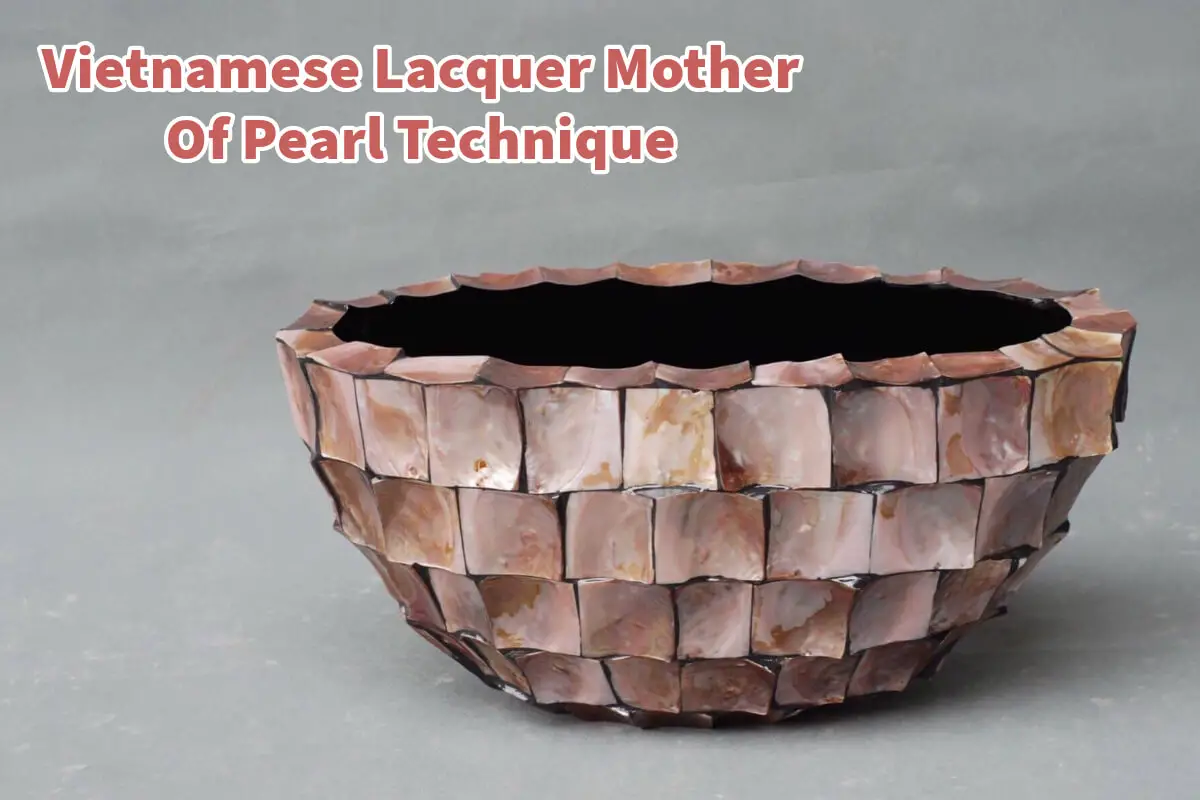Vietnam boasts a rich heritage in lacquerware production adorned with mother-of-pearl inlays.
What sets the Vietnamese lacquer mother of pearl craft apart is the extensive palette of colors and techniques that can be employed, resulting in both traditional and modern designs. Like many aspects of Vietnamese culture, this form of lacquerware has a deep-rooted history that spans generations. Continue reading to delve deeper into the captivating world of the Vietnamese lacquer mother-of-pearl technique.
Table of Contents
- The Lustrous Legacy Of Vietnamese Lacquer Mother Of Pearl: A Timeless Handicraft
- 11 Reasons Why Vietnamese Mother Of Pearl Is Unique And Continues To Shine
- Frequently Asked Questions
- Related Content
The Lustrous Legacy Of Vietnamese Lacquer Mother Of Pearl: A Timeless Handicraft
Vietnam is a country steeped in tradition, and one of its most revered handicrafts is the mother of pearl inlay on lacquerware. Vietnamese artisans have mastered this craft for hundreds of years, producing works of art that are beautiful and steeped in history. As a testimony to their skills,
Vietnam is considered one of the top places globally for mother-of-pearl production. In this blog post, we delve into this ancient craft, explore its origins, unique characteristics, and why it continues to be held in high esteem today.
Mother Of Pearl Historical Roots: A Craft Passed Down From Generations
Cuon Ngo village has a rich history dating back to the Ly dynasty, from 1010 to 1225. According to local history books, Truong Cong Thanh, a former general in Cuon Ngo village and a resident, is credited with being the progenitor of the pearl inlay craft.
He then passed down his specialized skills to the villagers, who have carried on this extraordinary tradition. And today, they continue to produce some beautiful inlay mother-of-pearl work.
The Craftsmanship: Skilled Artisans In A League Of Their Own
Vietnamese artisans are highly skilled in mother-of-pearl production, a testament to their rich cultural inheritance and intense training. Today, they utilize various techniques and finishes, transforming many shell types into intricate art pieces.
Vietnamese are considered to have some of the best inlay mother of pearl produced today. This is because the skills have been passed down from generation to generation.
Shell Varieties And Techniques
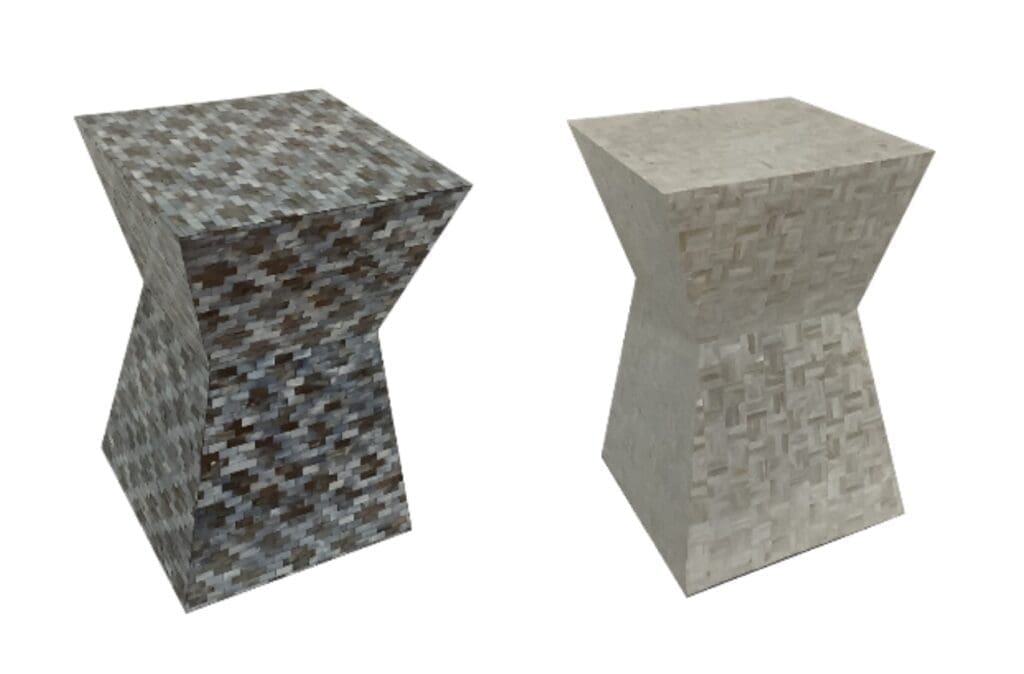
Vietnamese artisans use a diverse array of shells, each adding its unique quality to the finished product:
- White Mother of Pearl Shells – Renowned for their soft luminescence.
- Abalone Shells – Known for their iridescent colors.
- Shells with Pink Tones – Offering a delicate hue to the designs.
- Dyed Shells – Today, many Vietnamese factories are dyeing the mother of pearl shells into various colors and finishes.
Vietnam can offer a spectrum of colors and finishes that add to the uniqueness of each piece.
11 Reasons Why Vietnamese Mother Of Pearl Is Unique And Continues To Shine
Vietnamese inlay mother of pearl is a unique product. Below are 11 reasons why the Vietnamese mother of pearl is so unique and continues to be necessary.
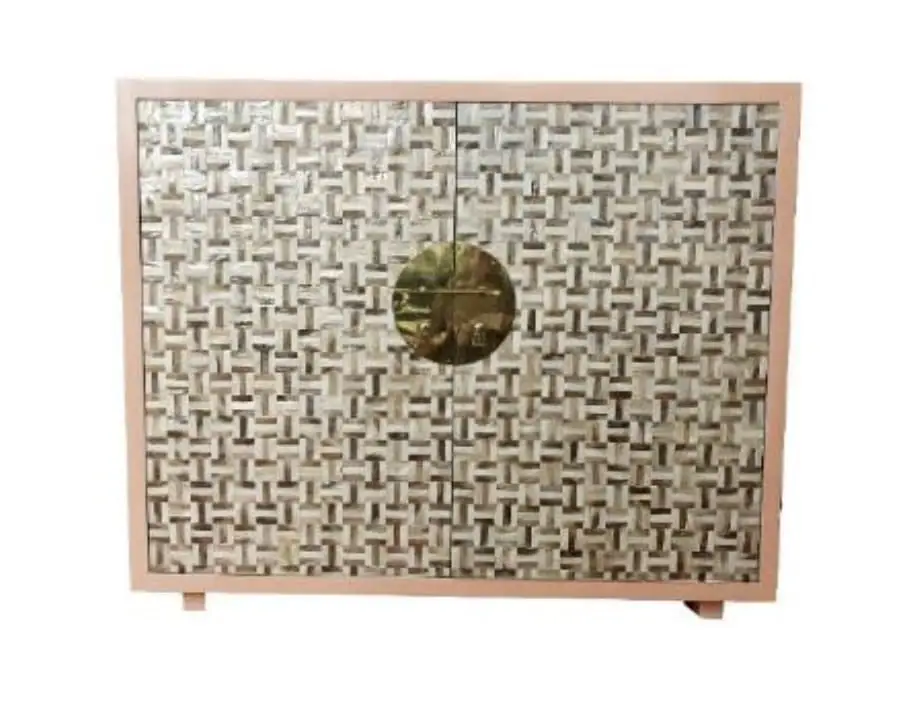
1. Rich History
The craft dates back hundreds of years, making each piece a part of Vietnam’s extensive cultural tapestry.
2. Local Artisans
The skill set has been passed down through generations, preserving the authenticity and techniques that make this craft unique.
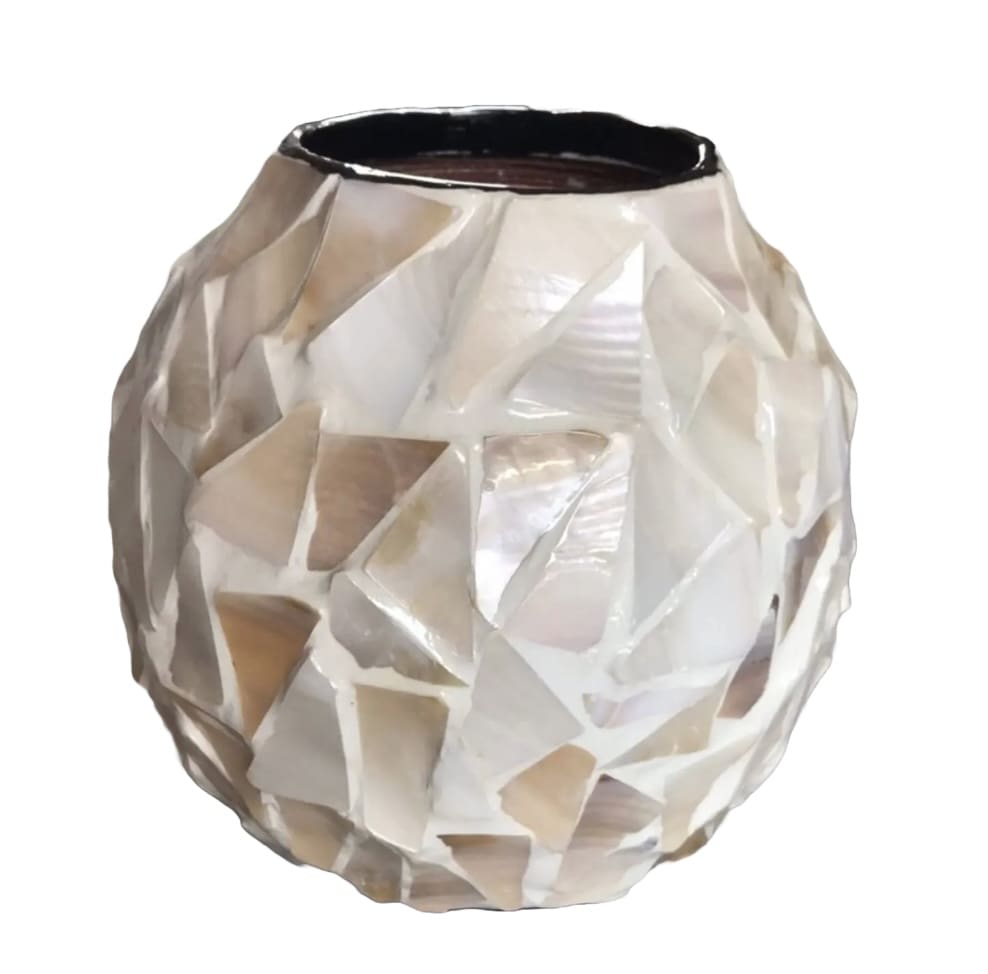
3. Versatility In Designs
Modern-day artisans have expanded upon traditional designs, producing items that range from classical to contemporary.
4. Range Of Shell Types
The variety of shells used adds complexity and diversity to the products.
5. Unique Dyeing Techniques
The ability to dye shells allows for even more creativity and versatility in design.
6. Intricate Patterns
The attention to detail is exceptional, with complex patterns and motifs that are second to none.
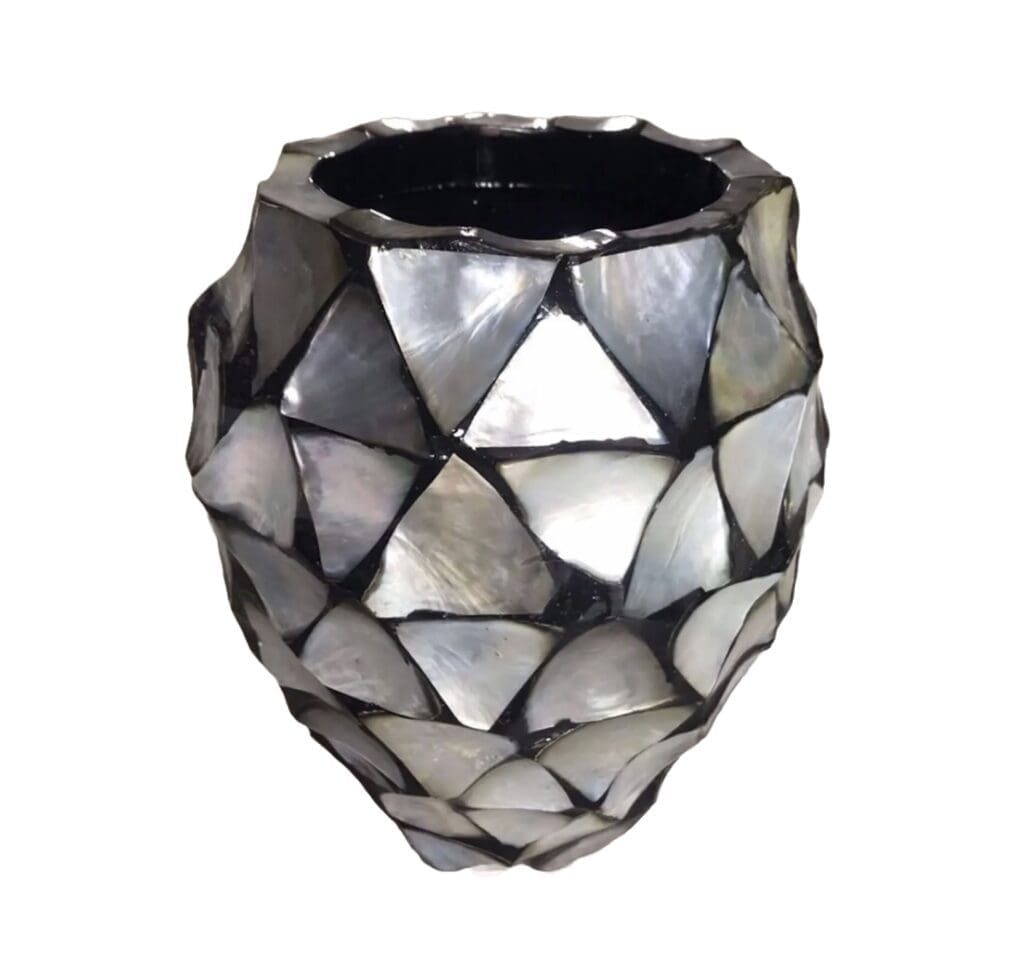
7. Quality Finish
The quality of the lacquer used ensures a long-lasting finish that enhances the visual appeal of each item.
8. Multiple Applications
From furniture to decorative items, the mother-of-pearl inlay adds a touch of luxury to various objects. We do mother of pearls on objects such as trays, boxes, lamps, bowls, mirrors, wall art, and furniture.
9. Global Recognition
The craft has received worldwide acclaim, solidifying Vietnam’s reputation as one of the best places for mother-of-pearl production.
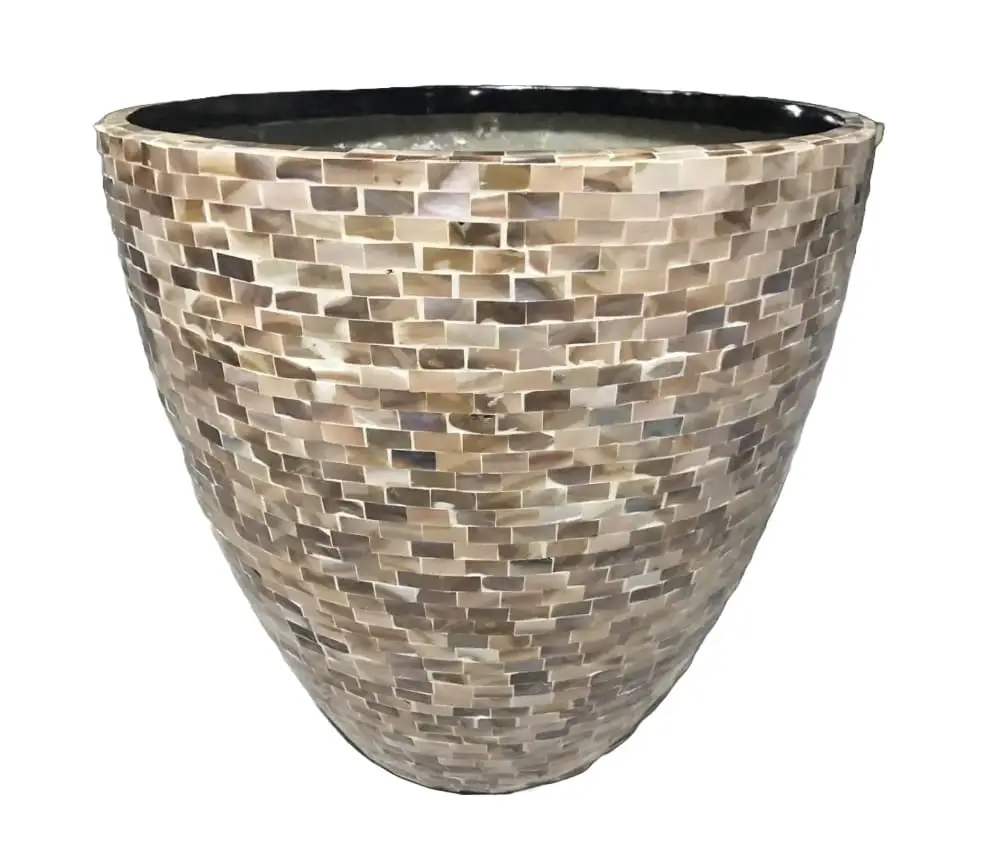
10. Unparalleled Craftsmanship
The level of craftsmanship involved is extraordinary, ensuring that each piece is an individual work of art.
11. Sustainability
Modern production methods focus on sustainability, ensuring the craft can continue for future generations.
Vietnamese mother-of-pearl inlaid lacquerware is an art form that blends history, culture, and craftsmanship. The rich legacy of this craft, passed down through generations in places like Cuon Ngo village, coupled with the skillful techniques employed by modern artisans, makes it an unparalleled craft globally.
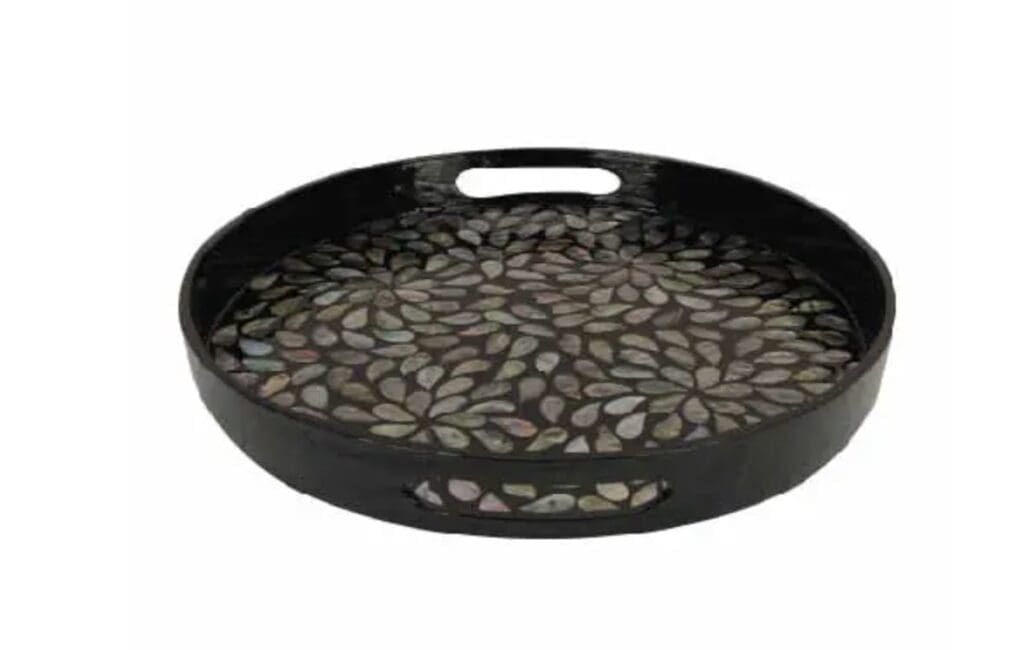
From its intricate designs to its durable quality, this art form has stood the test of time for numerous reasons. As explored in this article, Vietnamese mother-of-pearl inlaid lacquerware isn’t just an art form; it’s a celebration of a culture and its people.
Whether a simple decorative item or an elaborate piece of furniture, the mother-of-pearl inlay adds an irreplaceable touch of luxury and refinement. In a world increasingly dominated by mass production, this ancient Vietnamese craft offers something unique—a tangible connection to a rich cultural history through an item of undeniable beauty and quality.
At Mondoro, we craft various home decor items featuring Vietnamese lacquer mother-of-pearl. Our product line spans a diverse range, including boxes, trays, bowls, lamps, mirrors, wall art, and furniture.
If you’re interested in commissioning unique home decor pieces with mother-of-pearl inlays, we’d be delighted to discuss your needs further.
Frequently Asked Questions
What is Mother of Pearl?
Mother of Pearl, also known as nacre, is the iridescent inner layer found in the shells of some mollusks, including oysters, clams, and abalones. It acts as a protective layer and gives shells their lustrous appearance.
How is Mother of Pearl different from pearls?
While both originate from mollusks, pearls are formed when a foreign substance gets trapped inside the mollusk. The mollusk secretes nacre around this irritant, creating a pearl. On the other hand, Mother of Pearl is the lining of the shell itself.
What are the uses of Mother of Pearl?
Mother of Pearl is frequently used in jewelry, watch faces, and decorative inlays in furniture, musical instruments, and various artifacts. It’s prized for its shimmering, iridescent quality.
Is Mother of Pearl expensive?
The value of Mother of Pearl varies depending on its quality, source, and the intricacy of the piece it’s used in. Generally, it’s more affordable than pearls, but certain high-quality or handcrafted items can be pricey.
Does Mother of Pearl have any symbolic meanings?
Throughout history, Mother of Pearl has been associated with wealth, protection, and luck. In various cultures, it’s also seen as a symbol of motherly love and is believed to have calming and soothing properties.
Is Mother of Pearl durable?
Mother of Pearl is relatively durable, but it’s softer than gemstones like diamonds or sapphires. It can scratch, chip, or lose its luster if not handled with care.
If you are interested in seeing how Mondoro can help you manufacture mother of pearl home decor and home furnishing products – we would love to talk to you to see how we can help you.
Find out more about how Mondoro can help you create, develop, and manufacture excellent home decor and home furniture products – don’t hesitate to contact me, Anita. Check out my email by clicking here or become a part of our community and join our newsletter by clicking here.
Mondoro gives out a FREE Lookbook to anyone interested. You can receive a copy of our latest Lookbook by clicking here.
Listen to our Podcast called Global Trade Gal. You can find it on all major podcast platforms. Try out to listen to one of our podcasts by clicking here.
Subscribe to our Mondoro Company Limited YouTube Channel filled with great videos and information by clicking here.
Related Content
Why Is It Called Mother Of Pearl? Pearls and Mother of Pearls
The name mother used in Mother of Pearl is thought to come from a nearly obsolete meaning of mother, which means “scrum, drugs, or leftover fifth.” This would be because the Mother of Pearl comes from the leftover shell of the oyster, clam, or mussel. The scientific name for Mother of Pearl is nacre.
You can discover more by reading Why Is It Called Mother Of Pearl? Pearls and Mother of Pearls by clicking here.
What is the Mother of Pearl Shell Used in Home Decor Products?
Mother of pearl, which is also known by the scientific name of nacre, is a pearl layer on the inner layer of the oyster shell. This pearl layer of the oyster is taken off the outer oyster shell. Then the leftover inner pearl shell is then cut into various small shapes and sizes to be then glued to various home decors products such as mirrors, boxes, trays, and lamp bases.
You can discover more by reading What is the Mother of Pearl Shell Used in Home Decor Products?by clicking here.
How To Identify If Mother Of Pearl Is Real? Spotting What’s Fake
When considering a Mother of Pearl for home decor and home furnishing products, you need to ensure that the mother of pearl you were getting is the highest quality real Mother of Pearl. You can do some basic tests to help you ensure that the Mother of Pearl you are purchasing is a natural material and not the fake versions of mother of pearl.
You can discover more by reading How To Identify If Mother Of Pearl Is Real? Spotting What’s Fake by clicking here.

